-
Latin America
Latin America
- Countries (hidden space)
- Galapagos & Ecuador
- Guatemala
- Mexico
- Panama
- Peru
- Popular Attractions
- Machu Picchu
- Inca Trail
- Easter Island
- Galapagos Islands
- Patagonia
- Rio de Janeiro
- Iguazu Falls
-
Africa
Africa
- Spacer Africa
- South Africa
- Zimbabwe
- Popular Attractions
- Cape Town
- Okavango Delta
- Sossusvlei Dunes
- Victoria Falls
- The Kruger
- The Garden Route
- Masai Mara
-
Asia & Middle East
Asia & Middle East
- Asia
- Borneo (Malaysia)
- Cambodia
- India
- Japan
- Middle East
- Jordan
- Spacer Asia
- Laos
- Sri Lanka
- Uzbekistan
- Vietnam
- Popular Attractions
- Taj Mahal
- Lion Rock (Sigiriya)
- Angkor Wat
- Ha Long Bay
- Kyoto
- Petra
-
Destinations
- Latin America
- Argentina
- Bolivia
- Brazil
- Chile
- Colombia
- Costa Rica
- Galapagos & Ecuador
- Guatemala
- Mexico
- Panama
- Peru
- Asia
- Borneo (Malaysia)
- Cambodia
- India
- Japan
- Laos
- Sri Lanka
- Uzbekistan
- Vietnam
- Middle East
- Jordan
- Southern & East Africa
- Botswana
- Kenya
- Namibia
- South Africa
- Zimbabwe
- Contact Us
-
About
About
Llama Travel provides high quality holidays at the lowest possible prices.
99% recommend us Lower prices - guaranteed Financially protected by ATOL
Vietnam's Northern and Central Charm
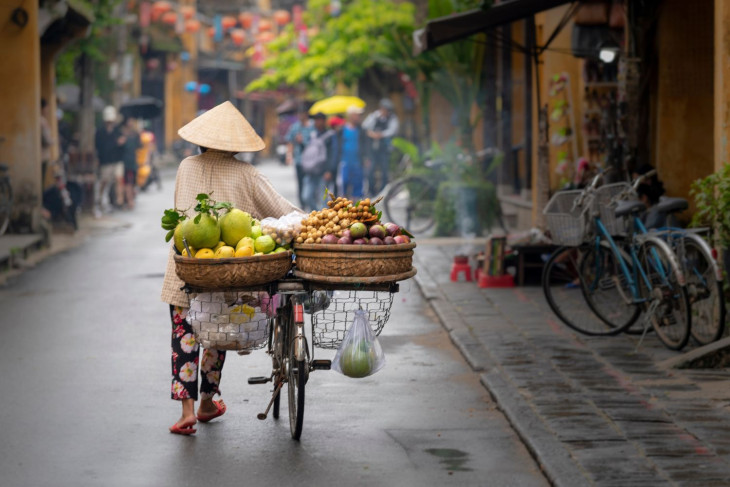
Vietnam is a country of contrasts, from buzzing cities and serene landscapes to some of the best food you'll ever taste. Vietnam is a land where it feels like motorbikes outnumber the people; and one moment you're weaving through a sea of scooters and street food stalls, the next you're drifting past rice paddies and limestone cliffs. From the rural areas to Ha Long Bay, its natural beauty is just as memorable as its vibrant culture and history.
In this blog, I share highlights from my two-week trip, plus tips and insights to help you make the most of your own adventure. While seeing it all in a fortnight is impossible, Llama Travel has built a well-rounded itinerary that blends cities, nature, and local experiences. With Llama Travel, you can tailor your trip to suit your style: add extensions, join optional excursions, or explore independently. There’s no one right way to do it, just what works best for you.
Hanoi
Every time I’ve tried to put Hanoi into words, one thing’s clear: nothing can truly prepare you for the full-on sensory overload of Vietnam’s northern capital.
Hanoi is chaos and charm rolled into one, the honking, loud, overstimulating traffic, the disintegrating colonial buildings, the fragrant street food, and motorbike fumes all competing for space in the same breath. It’s a city of extremes: rich in history but fast modernising, tightly packed in the Old Quarter yet surprisingly peaceful around Hoan Kiem Lake or the Temple of Literature.
I spent much of my time fluctuating between fascination and frustration (especially when you can’t walk on the pavement due to the parked motorbikes). One minute I was in love with a steaming bowl of pho at a street stall, the next I was escaping the chaos for a quiet corner coffee shop.
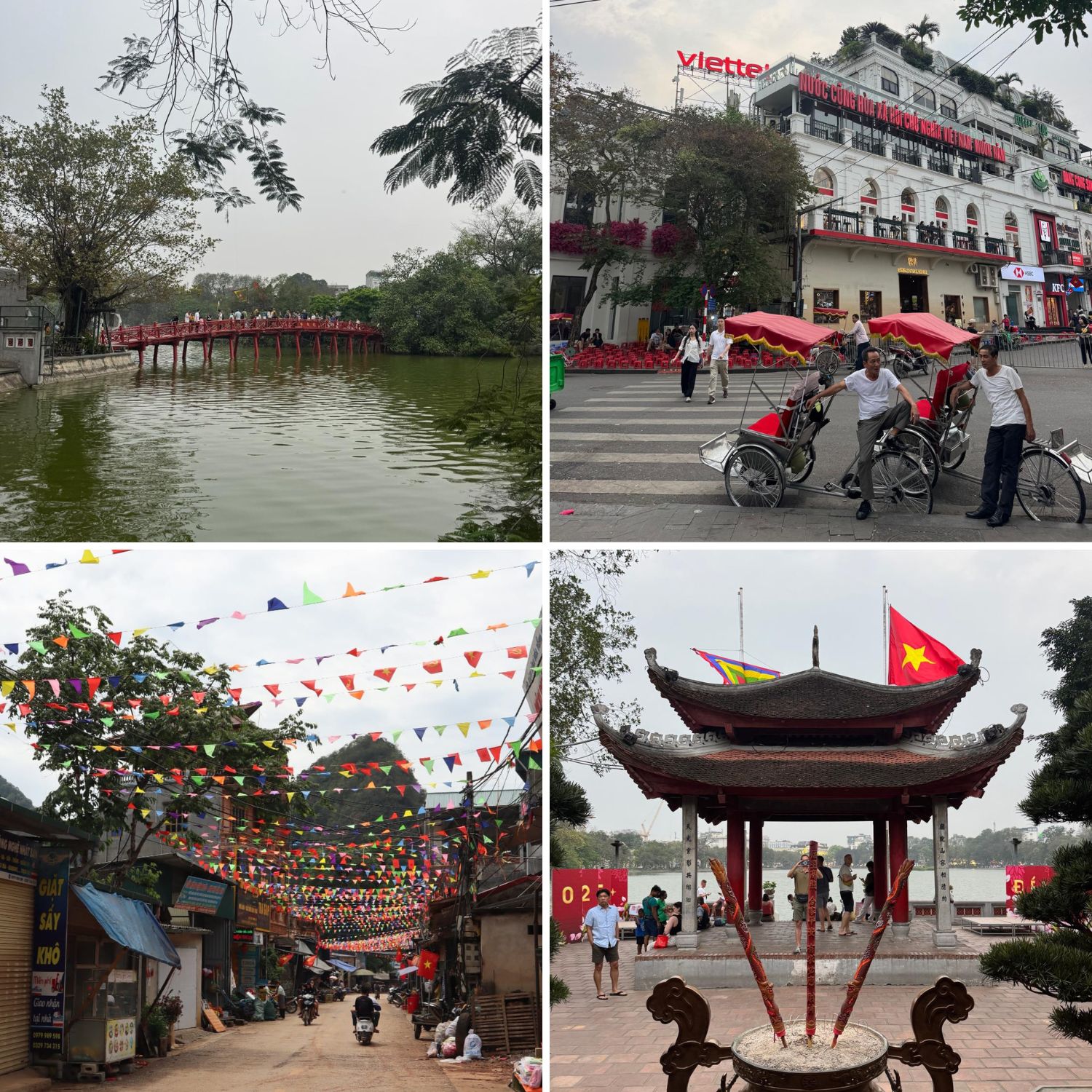
The Hoc Brige, Hanoi Old Town, Ngoc Son Temple
That chaotic energy is exactly what makes Hanoi’s Old Quarter so thrilling to explore. Dating back to the 11th century, when King Ly Thai To moved the capital here, the area quickly became a hub of trade. Streets formed around the guilds that settled in, and each one, known as a Hang, was named after the goods sold there. You’ll still see that legacy today: Hang Bac (silver), Hang Duong (sugar), Hang Bong (cotton), and Hang Non (hats), to name a few.
As the city developed, so did the area’s architecture, reflecting Hanoi’s layered past. You’ll find everything from ancient pagodas and traditional tubular houses to faded French colonial facades, often side by side.
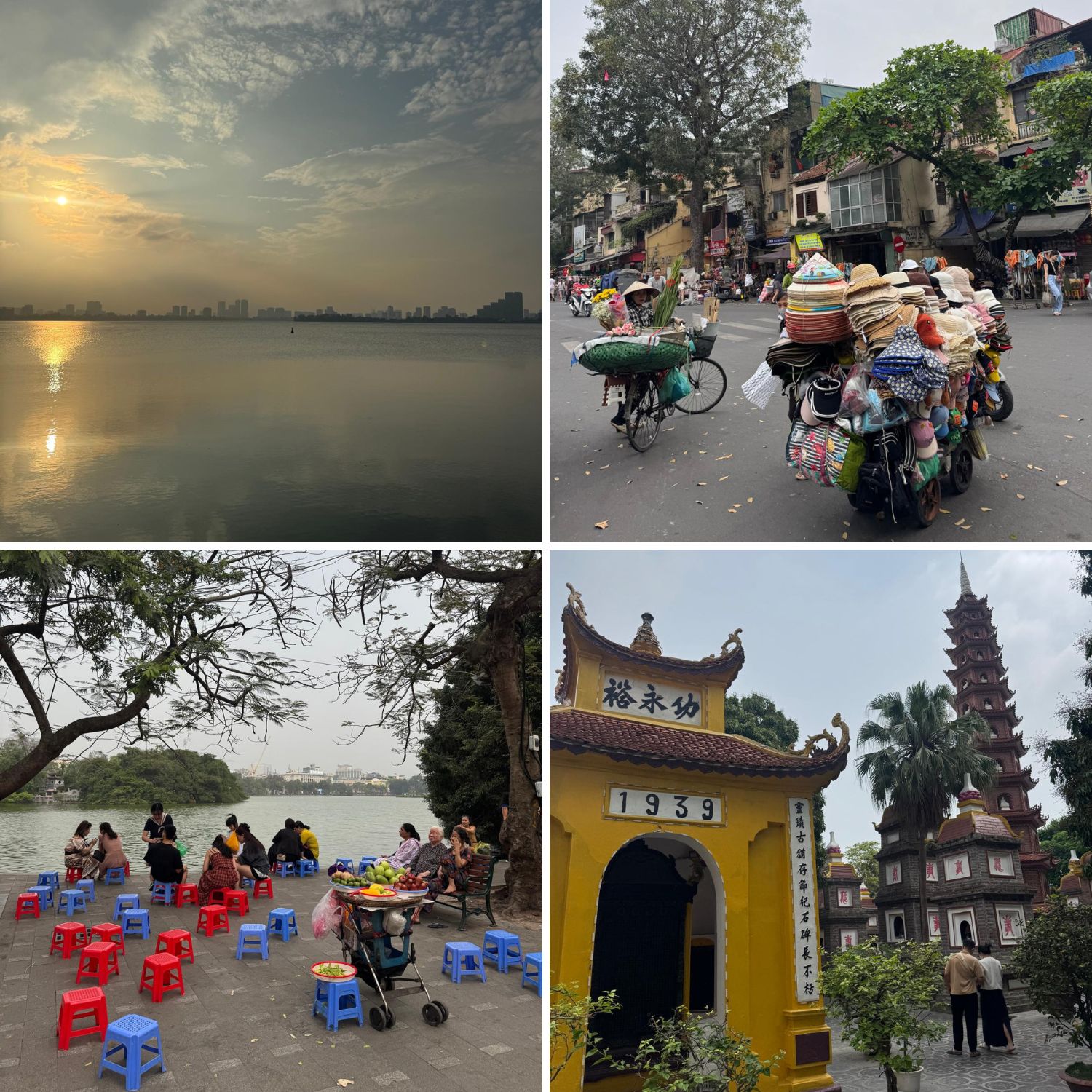
West Lake, Old Town, Hoan Kiem Lake, Tran Quoc Pagoda, Hanoi
Wandering these streets is like stepping through centuries of history, and one of the best ways to explore the city. There’s no right place to start your adventure, you just have to pick a street near Hoan Kiem Lake and start walking. You can take it all in on your own or opt for Llama Travel’s Hanoi Old Quarter optional excursion to learn more about the district’s architecture and colourful past. While you're in Hanoi, don’t miss the Temple of Literature, Vietnam’s first national university, or the Ho Chi Minh Mausoleum for a glimpse into the country’s modern history.
Lan Ha Bay
Lan Ha Bay is Ha Long Bay’s quieter, less-crowded neighbour, but with the same dramatic limestone scenery and turquoise waters. Dotted with around 2,000 jungle-covered islets shaped over 500 million years, it’s every bit as stunning, just a bit more peaceful.
I visited Lan Ha Bay on Llama Travel’s Vietnam holidays itinerary, and it ended up being one of the highlights of the trip. We left Hanoi at around 8:15 am and arrived at the bay just before lunch. As soon as we boarded the Peony Cruise, we were showered with rose petals on the way in, and greeted on arrival by an amazing buffet.
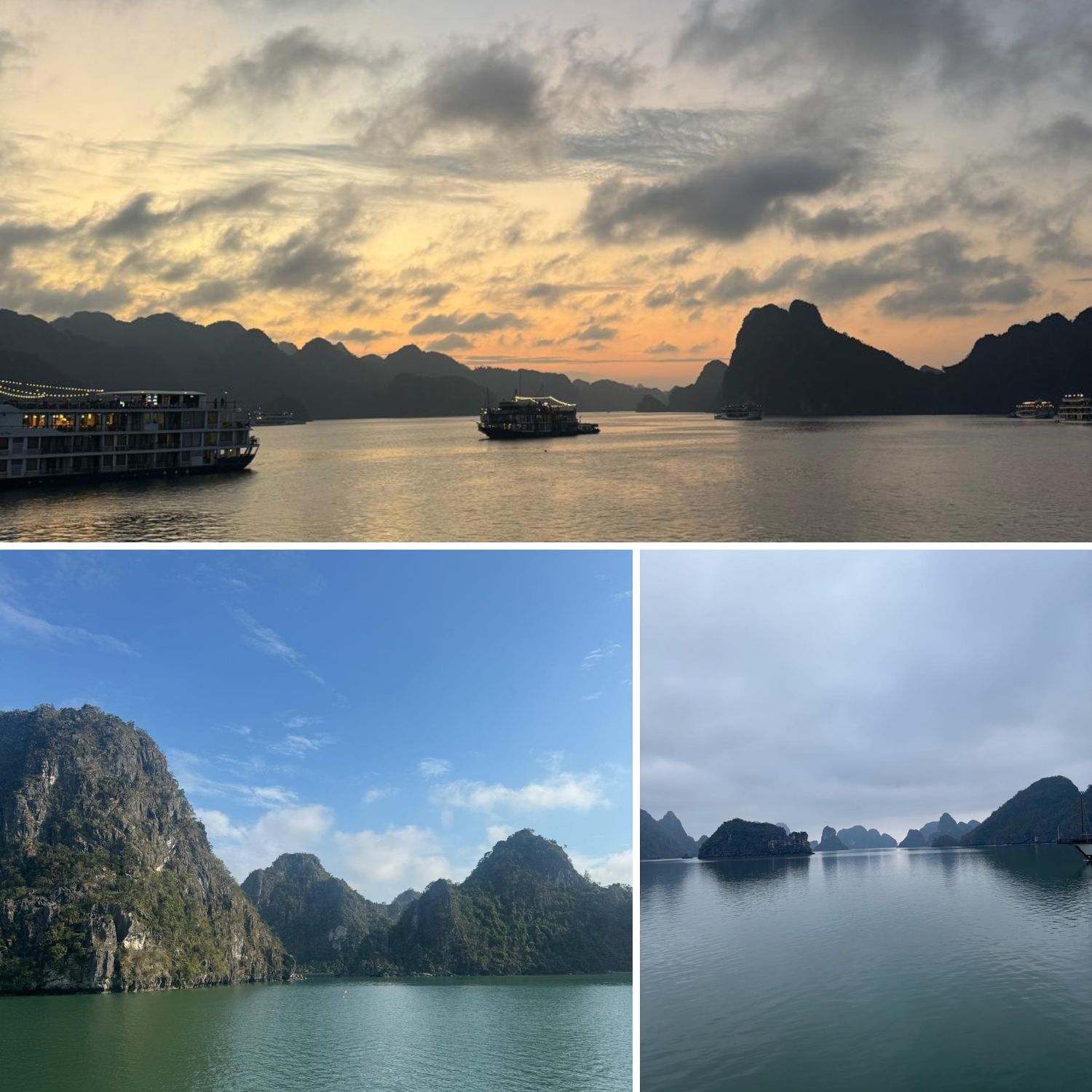
Lan Ha Bay Boat Cruise
The boat itself felt like a floating boutique hotel, complete with a rooftop pool, jacuzzi, and great, big windows throughout. There were also activities like kayaking, a Vietnamese cooking class, and early morning Tai Chi on deck, where you can watch the sunrise.
What I loved most was the relaxed pace; the boat stays fairly still at night, so you can fully absorb the stillness of the bay. It is the perfect way to wind down at the end of the trip and take in Vietnam’s natural beauty one last time.
Hue
Like many Asian countries, Vietnam was once ruled by dynasties of emperors. From 1802 to 1945, the Nguyen Dynasty governed from the city of Hue (pronounced “Hwhey”), making it the imperial heart of Vietnam. The dynasty eventually fell in 1945 when the last emperor abdicated in favour of the communist government in Hanoi, but Hue is still often referred to as Vietnam’s Imperial City.
The city’s key attraction is the Imperial Citadel, a vast complex that once housed royal residences, temples, and palaces, including the “Forbidden Purple City”, which was reserved exclusively for the emperor and his inner circle. While much of it was damaged during conflicts with the French and later during the Tet Offensive in 1968, parts of the original structures still remain. Today, you can walk (or cycle) through grand gates, explore restored halls, and stroll beside the moat fed by the Perfume River. Alternatively, take the Llama Travel optional Imperial City excursion to see some of Hue’s great monuments and learn about the luxurious and secretive world of the royal court.
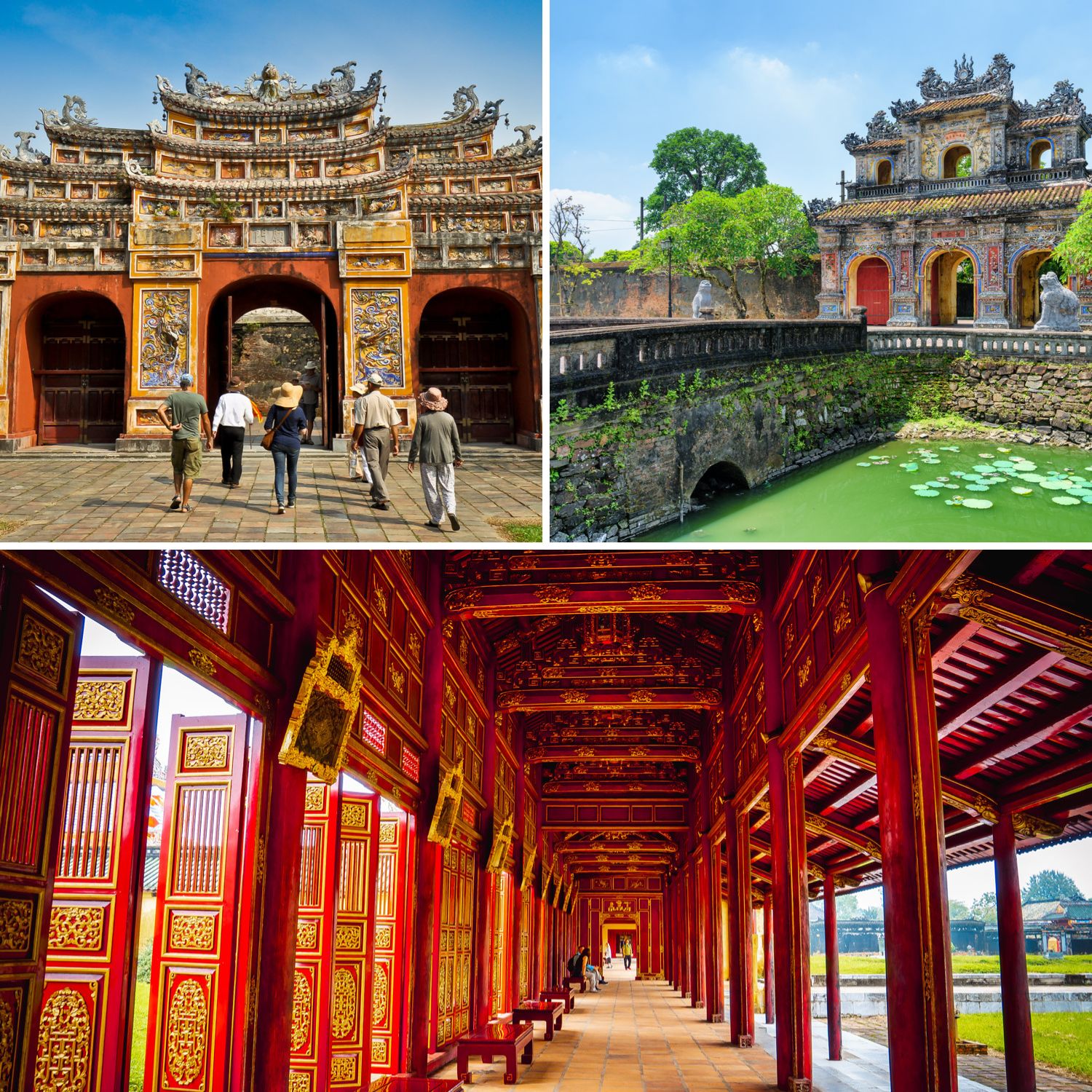
Imperial City, Hue
One of my favourite things about visiting Hue was actually the accommodation. I stayed at the Pilgrimage Village, just 5km outside the city in a peaceful, green setting. It felt like a proper retreat from the hustle of urban life, yet the hotel runs a free shuttle into the city every so often (the hotel staff will give you a schedule on arrival), so it was easy to explore the sights without missing out on the tranquillity the resort had to offer.
Hoi An
Once one of Southeast Asia’s most important trading ports, Hoi An now trades in something entirely different: tourism. It’s more Westernised than other parts of Vietnam, full of tailors and souvenir shops, and yet it’s hard not to fall for it.
I visited Hoi An after bustling Hanoi and historic Hue, and its slower pace, colourful lanterns, and charming streets were exactly what I needed. The Old Town, now a UNESCO World Heritage Site, is a maze of yellow-washed buildings, Japanese and Chinese architecture, and riverfront coffee shops and bars that draw you in. Even with the crowds, it’s a place that makes you slow down and enjoy every corner.
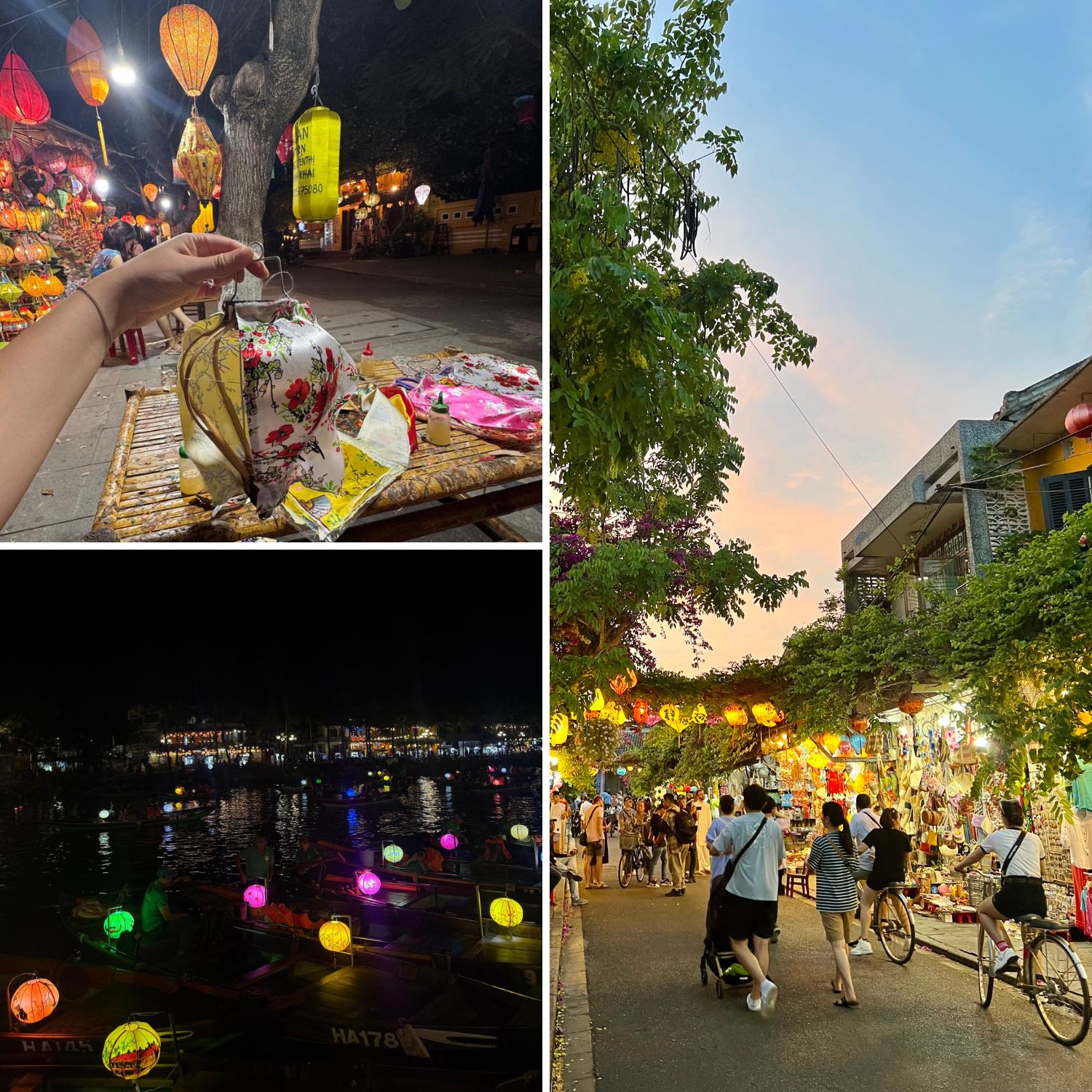
Lanterns, Lights and Markets of Hoi An
Hoi An ended up being my favourite spot in Vietnam. You can take a countryside bike tour, sign up for a cooking class, take a boat and light a lantern in the river, or simply wander through the lantern-lit alleyways. Shopping is huge here, from handmade lanterns (where you can also make one yourself) to tailored clothes, you’ll easily lose a few hours exploring the markets.
Don’t leave without trying Cao Lau, a chewy noodle dish unique to Hoi An, supposedly made with water from ancient local wells. You’ll find it on nearly every menu in the Old Town.
Overall
Vietnam tends to spark strong reactions from travellers, it’s not a country you forget easily. Some people fall for it instantly, others find it overwhelming. For me, it was the former, I loved it.
What really struck me was the diversity of the landscapes. One day I’d be floating past limestone karsts in Lan Ha Bay, the next I’d be weaving through the lantern-lit streets of Hoi An or exploring ancient imperial citadels in Hue. Even the cities, with their chaos and character, have their own kind of beauty. Vietnam is endlessly fascinating, full of contrast, colour, and culture, and without a doubt, one of the most visually captivating places I’ve ever visited.
Feeling inspired? Our travel experts would love to help you plan your holiday. Call us on 020 7263 3000 to find out more.
Sign up for our newsletter for more holiday tips and advice!
